Big data in wildlife research: remote web-based monitoring of hibernating black bears
- PMID: 25496699
- PMCID: PMC4277652
- DOI: 10.1186/s12899-014-0013-1
Big data in wildlife research: remote web-based monitoring of hibernating black bears
Abstract
Background: Numerous innovations for the management and collection of "big data" have arisen in the field of medicine, including implantable computers and sensors, wireless data transmission, and web-based repositories for collecting and organizing information. Recently, human clinical devices have been deployed in captive and free-ranging wildlife to aid in the characterization of both normal physiology and the interaction of animals with their environment, including reactions to humans. Although these devices have had a significant impact on the types and quantities of information that can be collected, their utility has been limited by internal memory capacities, the efforts required to extract and analyze information, and by the necessity to handle the animals in order to retrieve stored data.
Results: We surgically implanted miniaturized cardiac monitors (1.2 cc, Reveal LINQ™, Medtronic Inc.), a newly developed human clinical system, into hibernating wild American black bears (N = 6). These devices include wireless capabilities, which enabled frequent transmissions of detailed physiological data from bears in their remote den sites to a web-based data storage and management system. Solar and battery powered telemetry stations transmitted detailed physiological data over the cellular network during the winter months. The system provided the transfer of large quantities of data in near-real time. Observations included changes in heart rhythms associated with birthing and caring for cubs, and in all bears, long periods without heart beats (up to 16 seconds) occurred during each respiratory cycle.
Conclusions: For the first time, detailed physiological data were successfully transferred from an animal in the wild to a web-based data collection and management system, overcoming previous limitations on the quantities of data that could be transferred. The system provides an opportunity to detect unusual events as they are occurring, enabling investigation of the animal and site shortly afterwards. Although the current study was limited to bears in winter dens, we anticipate that future systems will transmit data from implantable monitors to wearable transmitters, allowing for big data transfer on non-stationary animals.
Figures
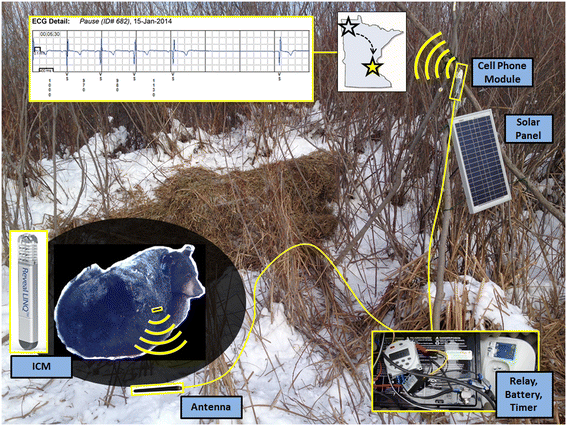
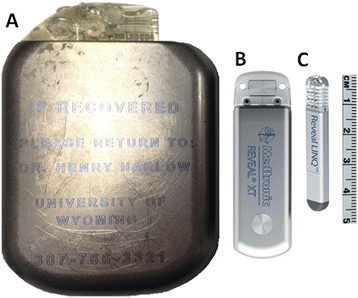
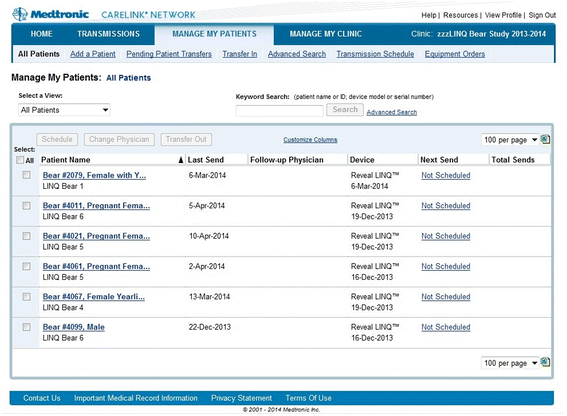
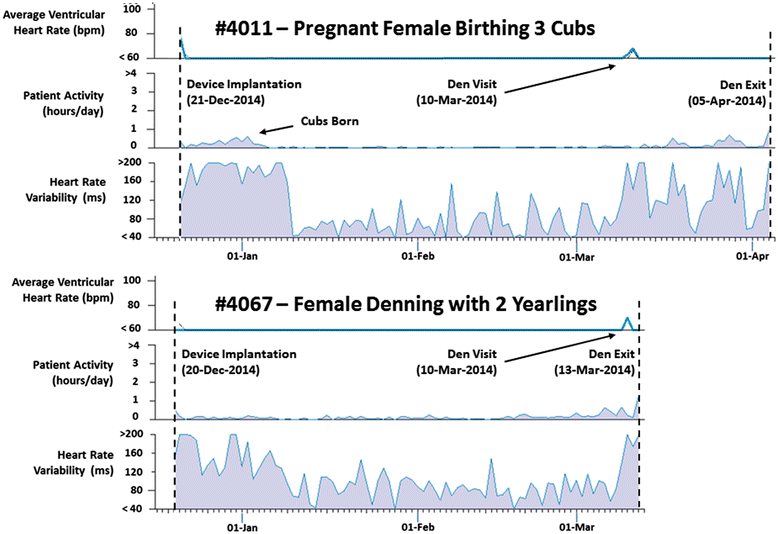
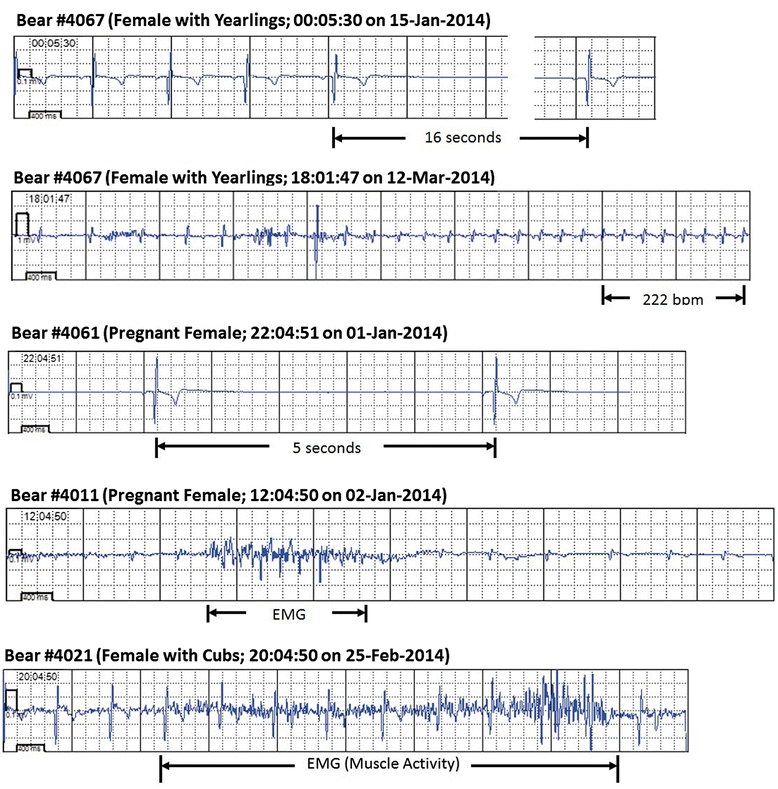
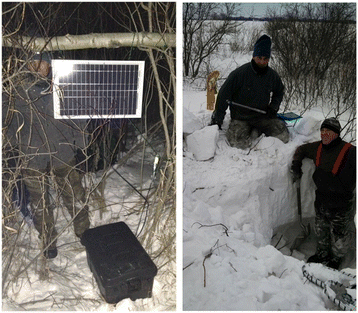
Similar articles
-
Monitoring the wild black bear's reaction to human and environmental stressors.BMC Physiol. 2011 Aug 17;11:13. doi: 10.1186/1472-6793-11-13. BMC Physiol. 2011. PMID: 21849079 Free PMC article.
-
High capacity implantable data recorders: system design and experience in canines and Denning black bears.J Biomech Eng. 2005 Nov;127(6):964-71. doi: 10.1115/1.2049340. J Biomech Eng. 2005. PMID: 16438234
-
Extreme respiratory sinus arrhythmia enables overwintering black bear survival--physiological insights and applications to human medicine.J Cardiovasc Transl Res. 2010 Oct;3(5):559-69. doi: 10.1007/s12265-010-9185-7. Epub 2010 May 1. J Cardiovasc Transl Res. 2010. PMID: 20559779
-
Insights from the Den: How Hibernating Bears May Help Us Understand and Treat Human Disease.Clin Transl Sci. 2015 Oct;8(5):601-5. doi: 10.1111/cts.12279. Epub 2015 Jun 17. Clin Transl Sci. 2015. PMID: 26083277 Free PMC article. Review.
-
Implantable diagnostic monitors in the early assessment of syncope and collapse.Prog Cardiovasc Dis. 2013 Jan-Feb;55(4):410-7. doi: 10.1016/j.pcad.2012.11.009. Prog Cardiovasc Dis. 2013. PMID: 23472779 Review.
Cited by
-
Six Years in the Life of a Mother Bear - The Longest Continuous Heart Rate Recordings from a Free-Ranging Mammal.Sci Rep. 2017 Jan 17;7:40732. doi: 10.1038/srep40732. Sci Rep. 2017. PMID: 28094804 Free PMC article.
-
An engineering perspective on the development and evolution of implantable cardiac monitors in free-living animals.Philos Trans R Soc Lond B Biol Sci. 2021 Aug 2;376(1830):20200217. doi: 10.1098/rstb.2020.0217. Epub 2021 Jun 14. Philos Trans R Soc Lond B Biol Sci. 2021. PMID: 34121460 Free PMC article.
-
The Recovery of Hibernating Hearts Lies on a Spectrum: from Bears in Nature to Patients with Coronary Artery Disease.J Cardiovasc Transl Res. 2015 Jun;8(4):244-52. doi: 10.1007/s12265-015-9625-5. Epub 2015 May 7. J Cardiovasc Transl Res. 2015. PMID: 25946989 Review.
References
-
- Poganis PJ. Bio-logging of physiological parameters in higher marine vertebrates. Deep-Sea Res II. 2007;54:183–192. doi: 10.1016/j.dsr2.2006.11.009. - DOI
-
- Ropert-Coudert Y, Kato A, Grémillet D, Crenner F. Bio-logging: recording the ecophysiology and behaviour of animals moving freely in their environment. In: Le Galliard J-F, Guarini J-M, Gaill F, editors. Sensors for Ecology. 2012. pp. 17–41.
-
- Grémillet D, Kuntz G, Woakes AJ, Gilbert C, Robin J-P, Maho YL, Butler PJ. Year-round recordings of behavioural and physiological parameters reveal the survival strategy of a poorly insulated diving endotherm during the Arctic winter. J Exp Biol. 2005;208:4231–4241. doi: 10.1242/jeb.01884. - DOI - PubMed
Publication types
MeSH terms
LinkOut - more resources
Full Text Sources
Other Literature Sources

